We mentioned in the previous article “What is a buzzer” that the difference between magnetic buzzers and piezo buzzers is different in working principles, so today we have a deeper understanding of the differences between the two.
Structure
Because the working principle of the magnetic buzzer and the piezo buzzer, the internal structure is very different. Let’s first take a look at the internal structure of the two.
Magnetic Buzzer
It is mainly composed of oscillators, electromagnetic coils, magnets, vibration diaphragms and housing. The following picture is the section of the electromagnetic buzzer.
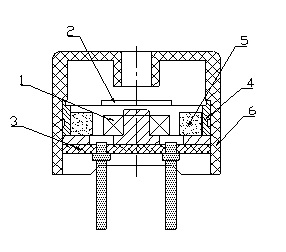
| Part No. | Part Name |
| 1 | Coil Part |
| 2 | Diaphragm |
| 3 | PCB |
| 4 | Core |
| 5 | Brass Ring |
| 6 | Housing |
Piezo Buzzer
It is mainly composed of a multivibrator, piezo element, impedance matcher, resonance box and housing. The following picture is the section of the piezo buzzer.
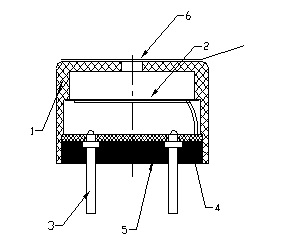
| Part No. | Part Name |
| 1 | Housing |
| 2 | Piezo Element |
| 3 | Lead Pin |
| 4 | PCB |
| 5 | Epoxy |
| 6 | Masking Label |
How to Distinguish Magnetic Buzzer and Piezo Buzzer from Appearance
Magnetic buzzers and Piezo buzzers don’t look very different from the appearance, so they often cause many engineers or buyers not to know which kind of buzzer they get in their hands, providing a little know-how for readers.
The buzzer will have a sound hole that allows sound to come out of this hole. The hole may be at the top or on the side. The sound hole on the top is called the upper sound (or top sound). The sound hole on the side is called the side sound.
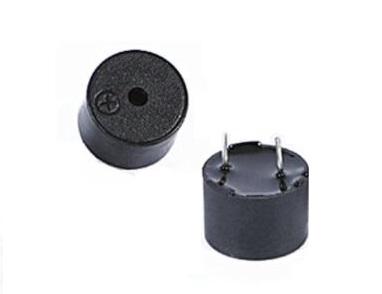
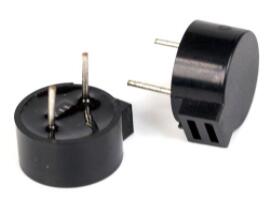
From the above pictures, we can know that if we look into the sound hole of the upper sound buzzer, we can see the inside of the buzzer. If it is a magnetic buzzer, we will see a vibrating diaphragm. If it is a piezo buzzer, we will see a piezo element. The raw material of the vibrating diaphragm is different from that of the piezo element, so the color is also very different. The vibration diaphragm is mainly composed of iron, so it has a metallic color of silver gray. Most of the substrates of the piezo element are made of copper, so it will be seen in brass. The following two pictures can see the difference. If it is a side-souding buzzer, because you can’t see the interior, it can’t be distinguished in this way.
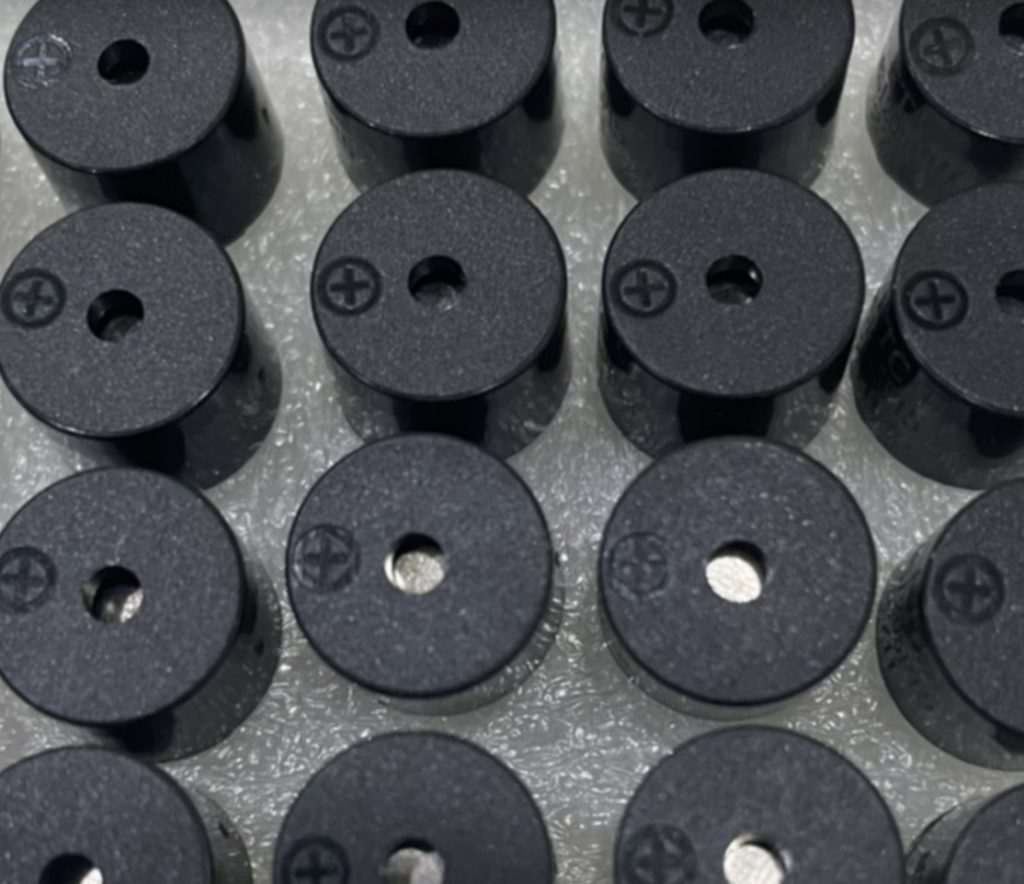
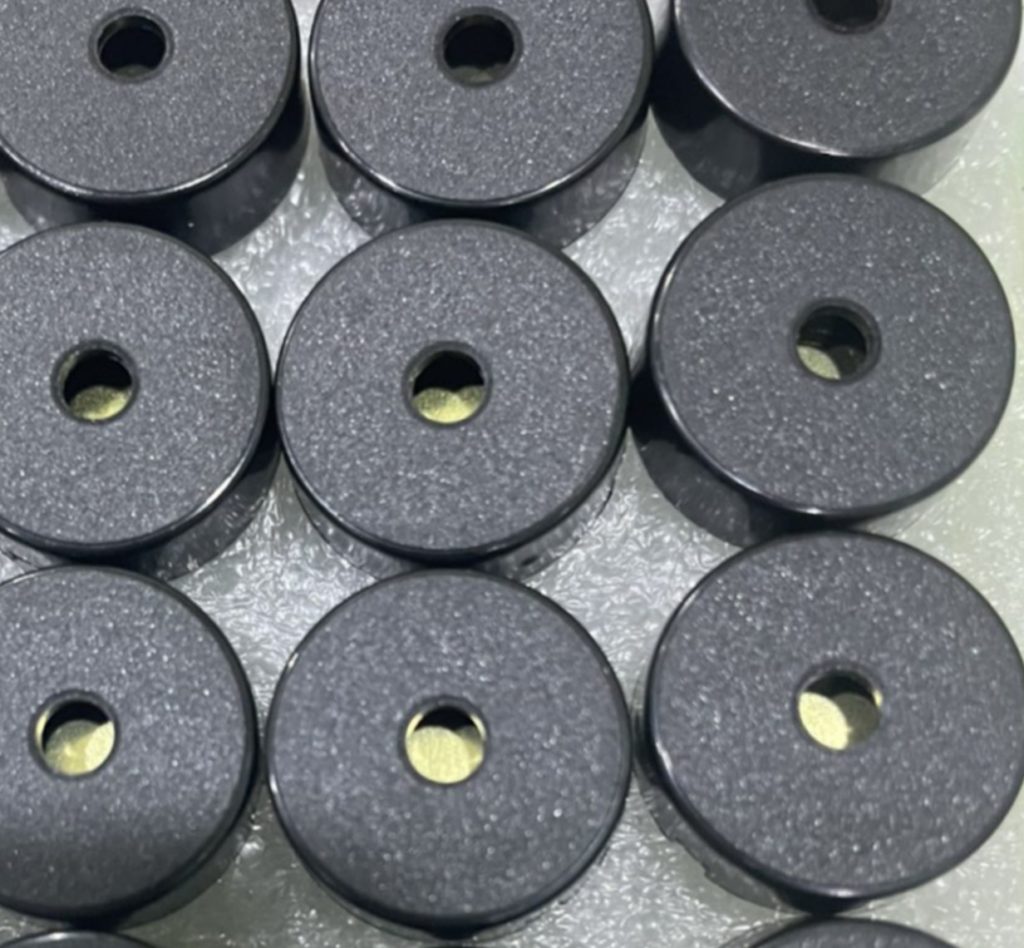
Specification
After learning how the structure of the magnetic buzzer is different from that of the piezo buzzer, let’s take a look at what the two will be different in terms of electrical specifications, dimensions and connections. The electrical specifications include voltage, current consumption and drive mode.
Working Voltage
The minimum working voltage of the electromagnetic buzzer is 1.5V, and the maximum is 24V. The voltage range of piezo buzzers is relatively wide, from 1V to 220V. Therefore, if you want to use voltage greater than 24V, you can only choose a piezoe buzzer. However, if the voltage used is smaller, it is recommended to use an magnetic buzzer. Because piezo buzzers generally recommend using voltage above 9V, the sound will be larger.
Current Consumption
The current consumption of the magnetic buzzer ranges from 10mA to 150mA, and the current consumption of the piezo buzzer is mostly below 10mA. When the buzzer starts, it needs to consume about three times the current. Therefore, if there is a need for power-saving or portable products, it is recommended to use a piezo buzzer that saves power.
Drive Mode
Magnetic and piezo buzzers both have two drive mode: self-drive and external-drive. Self-drive buzzers both are driven by rated voltage DC. External-drive buzzers are different from magnetic and piezo buzzers. External-drive piezo buzzers are driven by square waves, and external-drive magnetic buzzers are recommended to be driven by 1/2 square waves.
Size
Volume is often one of the requirements for choosing a buzzer, and the size is also related to the volume. Generally, the larger the size of the buzzer, the louder the sound. The size of the magnetic buzzer is about 5 to 25mm. The size of the piezo buzzer is about from 10m to 55mm.
Connection
As mentioned in the previous article “What Is Buzzer”, the common connection methods are DIP type, wire type and SMD type. Wired products of magnetic buzzers are not common. They are usually customized to customers, so the cost is higher. Piezo buzzer is in addition to the above three methods, some products can also be connected by locking screws.
Conclusions
I believe everyone must be more aware of the difference between magnetic and piezo buzzers. Let’s arrange a table below so that readers can know more clearly.
| Piezo Buzzer | Magnetic Buzzer | |
| Operating Voltage Range | Wider | Smaller |
| Current Consumption | Smaller | Bigger |
| Drive Mode | DC or square wave | DC or 1/2 square wave |
| Size | Bigger | Smaller |
| Height | Shorter | Taller |
| Connection | DIP Type Wire Type SMD Type Panel Mount | DIP Type SMD Type |




